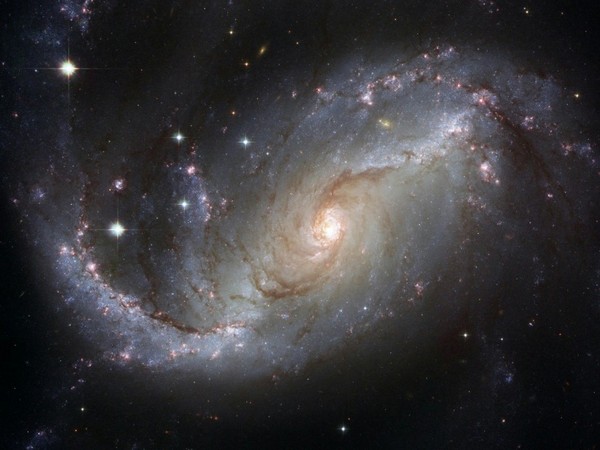Washington DC [US], April 19 (ANI): Astronomers have detected the most promising signs yet of a possible biosignature outside the solar system, although they remain cautious.
Using data from the James Webb Space Telescope (JWST), the astronomers, led by the University of Cambridge, have detected the chemical fingerprints of dimethyl sulfide (DMS) and/or dimethyl disulfide (DMDS), in the atmosphere of the exoplanet K2-18b, which orbits its star in the habitable zone.
On Earth, DMS and DMDS are only produced by life, primarily microbial life such as marine phytoplankton.
While an unknown chemical process may be the source of these molecules in K2-18b’s atmosphere, the results are the strongest evidence yet that life may exist on a planet outside our solar system.
The observations have reached the ‘three-sigma’ level of statistical significance — meaning there is a 0.3% probability that they occurred by chance.
To reach the accepted classification for scientific discovery, the observations would have to cross the five-sigma threshold, meaning there would be below a 0.00006% probability they occurred by chance.
The researchers say between 16 and 24 hours of follow-up observation time with JWST may help them reach the all-important five-sigma significance.
Their results are reported in The Astrophysical Journal Letters.
Earlier observations of K2-18b–which is 8.6 times as massive and 2.6 times as large as Earth and lies 124 light years away in the constellation of Leo, identified methane and carbon dioxide in its atmosphere.
This was the first time carbon-based molecules were discovered in the atmosphere of an exoplanet in the habitable zone. Those results were consistent with predictions for a ‘Hycean’ planet: a habitable ocean-covered world underneath a hydrogen-rich atmosphere.
However, another, weaker signal hinted at the possibility of something else happening on K2-18b.
“We didn’t know for sure whether the signal we saw last time was due to DMS, but just the hint of it was exciting enough for us to have another look with JWST using a different instrument,” said Professor Nikku Madhusudhan from Cambridge’s Institute of Astronomy, who led the research.
To determine the chemical composition of the atmospheres of faraway planets, astronomers analyse the light from their parent star as the planet transits, or passes in front of the star as seen from the Earth.
As K2-18b transits, JWST can detect a drop in stellar brightness, and a tiny fraction of starlight passes through the planet’s atmosphere before reaching Earth.
The absorption of some of the starlight in the planet’s atmosphere leaves imprints in the stellar spectrum that astronomers can piece together to determine the constituent gases of the exoplanet’s atmosphere.
The earlier, tentative inference of DMS was made using JWST’s NIRISS (Near-Infrared Imager and Slitless Spectrograph) and NIRSpec (Near-Infrared Spectrograph) instruments, which together cover the near-infrared (0.8-5 micron) range of wavelengths.
The new, independent observation used JWST’s MIRI (Mid-Infrared Instrument) in the mid-infrared (6-12 micron) range.
“This is an independent line of evidence, using a different instrument than we did before and a different wavelength range of light, where there is no overlap with the previous observations,” said Madhusudhan. “The signal came through strong and clear.”
“It was an incredible realisation seeing the results emerge and remain consistent throughout the extensive independent analyses and robustness tests,” said co-author Mans Holmberg, a researcher at the Space Telescope Science Institute in Baltimore, USA.
DMS and DMDS are molecules from the same chemical family, and both are predicted to be biosignatures. (ANI)
Disclaimer: This story is auto-generated from a syndicated feed of ANI; only the image & headline may have been reworked by News Services Division of World News Network Inc Ltd and Palghar News and Pune News and World News
HINDI, MARATHI, GUJARATI, TAMIL, TELUGU, BENGALI, KANNADA, ORIYA, PUNJABI, URDU, MALAYALAM
For more details and packages

















